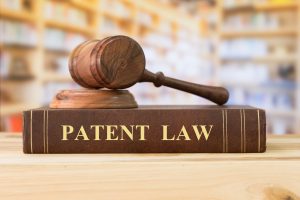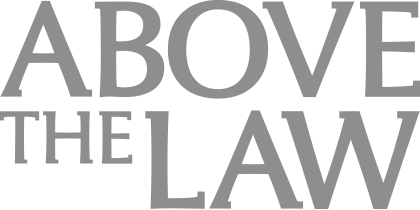3 Things The 2018 Patent Litigation Statistics Show Us
Considering the lessons of history in our field is an important step to take to make sure our advice is of the most informed quality.
 Last year, I wrote about what the 2017 patent litigation report put out by analytics outfit Lex Machina could teach us. As I said last year, while looking forward is an important part of the equation for any thinking lawyer, it can also be helpful to review what we have already learned. To that end, the recent release of the 2018 Lex Machina Patent Litigation Year In Review report (available here) once again provides a treasure trove of useful information for IP owners, defendants, and the patent attorneys who advise them. As I have said before, reports like the one just released by Lex Machina are an important contribution to the IP community and it behooves IP lawyers to read and consider them.
Last year, I wrote about what the 2017 patent litigation report put out by analytics outfit Lex Machina could teach us. As I said last year, while looking forward is an important part of the equation for any thinking lawyer, it can also be helpful to review what we have already learned. To that end, the recent release of the 2018 Lex Machina Patent Litigation Year In Review report (available here) once again provides a treasure trove of useful information for IP owners, defendants, and the patent attorneys who advise them. As I have said before, reports like the one just released by Lex Machina are an important contribution to the IP community and it behooves IP lawyers to read and consider them.
So let’s once again see what the report discloses. As with last year, while the top-line statistics (about the number of patent cases filed, or the busiest patent courts) are always of interest, the most useful takeaways I took from this year’s report had little to do with those numbers. Instead, I once again found myself most interested in determining where the statistics presented impacted on the way I think about patent litigation — especially with respect to counseling clients on managing the collateral effects that companies engaging in patent litigation most often deal with.
As with last year, this year’s report did not disappoint. What follows are three things we (already should?) know about the state of patent litigation as we continue along in 2019. First, I strongly encourage everyone to really study the section on damages in the report. There were two big takeaways from that section: the total amount of damages awarded was the highest since 2014, and the top three awards were against leading smartphone makers Apple and Samsung. While both those facts are interesting on the surface, a deeper look suggests that the odds of winning big damages in a patent case are still remote. For one, there were not even 10 damages awards in 2018 that exceeded $10mm in patent cases — out of over 60 plaintiff wins at trial. Nor will the global softening in smartphone sales help matters for patent plaintiffs hoping to cash in going forward. At the same time, we can expect that the large smartphone makers will continue as the prime patent targets in 2019 and beyond, if only for lack of other viable targets.

Law Firm Business Development Is More Than Relationship Building
Second, the list of most frequent litigants, particularly on the plaintiff side, is very interesting. Sure, there is the usual mix of non-practicing entities pursuing a volume approach in the hopes of generating a return for their owners and investors. More interesting, however, is the presence of companies like Celgene (pharma) and Juul Labs (vaping) on the list. Both of these companies made news in 2018, by becoming the target of a buyout (in Celgene’s case) or a major investment by a competitor (in Juul’s case). While it is hard to draw a precise correlation between their patent assertion activity and those business events, it is hard to imagine that either company would have generated as much outside interest if they didn’t have patent, or if they were gun-shy about asserting them to ward off competition. Here, we have at least two examples of patent enforcement activity being at least indirectly rewarded in the form of outside investment — on a much larger scale than the value of any one of the patent cases themselves, no less. For one, patent counsel and their clients would therefore do well to take into account the publicity-generating effects of a broad-based enforcement campaign as part of their evaluation of whether such a campaign is justified.
Finally, 2018 was once again an interesting year on the IPR front. The headline will likely be that IPR filings were down pretty dramatically, to their lowest level since 2014. While the uncertainty around the Supreme Court’s treatment of the IPR regime surely fed into that decline, so too does the overall decline in patent cases filed impact on the number of IPR filings. One of the drivers of this phenomenon is clear. There remains a significant cost-savings concern among in-house counsel, and the significant cost of filing an IPR petition is often deferred until it is deemed absolutely necessary — which often corresponds with the filing and advancement of a district court infringement claim against the potential IPR filer. Add in the fact that certain high-volume plaintiffs (who will be inevitably be challenged by IPRs filed by one of their early targets) drive a lot of the new case filings, and there are simply fewer situations where any given defendant feels compelled to incur the cost and burden of undertaking IPRs. That said, there remains no doubt that IPRs remain a first-line defense against infringement claims, even as defendants may be more circumspect about rushing to file those IPRs until a threat is deemed credible.
Ultimately, there is plenty we can glean from looking at the data from 2018. As with last year, the most important thing is to remember that each case is unique. As counsel, therefore, we are forced to confront challenges that historical data simply can’t prepare us for. At the same time, considering the lessons of history in our field is an important step to take to make sure our advice is of the most informed quality. So take what you can from the report and this column, and go out and make your own statistics. Those will be the ones that count anyway.
Please feel free to send comments or questions to me at [email protected] or via Twitter: @gkroub. Any topic suggestions or thoughts are most welcome.
Sponsored


Law Firm Business Development Is More Than Relationship Building

Curbing Client And Talent Loss With Productivity Tech

AI Presents Both Opportunities And Risks For Lawyers. Are You Prepared?
Gaston Kroub lives in Brooklyn and is a founding partner of Kroub, Silbersher & Kolmykov PLLC, an intellectual property litigation boutique, and Markman Advisors LLC, a leading consultancy on patent issues for the investment community. Gaston’s practice focuses on intellectual property litigation and related counseling, with a strong focus on patent matters. You can reach him at [email protected] or follow him on Twitter: @gkroub.
Sponsored

Generative AI at Work: Boosting e-Discovery Efficiency for Corporate Legal Teams








